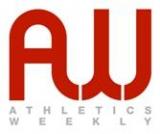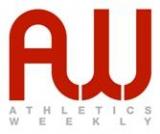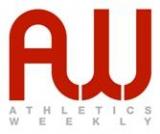Folders |
Rehab offers lifelinePublished by
For Emma Jackson, rehab is helping her return to full fitness and become stronger than ever. Matt Long visited her in Burton-on-Trent to find out moreAfter a European junior championship silver medal over 800m in 2007 and a tantalising fourth place at the 2010 Delhi Commonwealth Games, everything looked rosy for Emma Jackson. Indeed, by the end of 2011, it was time to reflect on her progress after making the semi-final stage at the World Championships in Daegu. However, what a difference a year makes in athletics. The break to her rib cage before the 2012 Olympic trials in Birmingham was followed by an even deeper break to the heart following her controversial omission from Team GB. More misery followed in 2014 as the 1:59.37 800m runner twice aggravated a stress response to her left femur. To aid her rehabilitation, she is part-funded by Perform, who are part of Spire Healthcare. Jackson spends three days a week on the outskirts of Burton-on-Trent in the National Forest at St George s Park, home to the new National Football Centre. Walking into the 25,000 square feet of world-leading technology which constitutes the Perform Centre, I am warmly greeted by the physiotherapy lead, Paul Williamson. The 40-year-old has been working as part of a team which has an expertise in sports medicine, rehabilitation, performance science and enhancement for more than two years and he himself is a five-time British pole vault champion. Sporting a PB of 5.55m, he placed a creditable ninth in the 2000 European Championships. His wife, formerly Jodie Hurst, also works at the same centre of excellence as an exercise physiologist, following a career as an international triple jumper. Williamson watches over Jackson s rehabilitation, seeing her twice weekly. He adds: Sports science support monitors Emma s heart rate variability ‘first beat to detect levels of recovery and stress and so I can see if we need to pull her back a little to ensure she stays injury-free.”
The team also includes resident sports and exercise medicine doctor, Charlotte Cowie, who has worked with Tottenham Hotspur FC and who went to her third Olympics in London 2012 as team support for the British taekwondo squad. However, the former pole vaulter points me in the direction of the three-lane indoor 60-metre track, which is complemented by video gait-analysis. Next up, I encounter a group of professional footballers who are working out in the functional rehabilitation gym, which is adorned with strength, balance and stability-testing equipment. I am then guided into the hydrotherapy suite, which features a Variopool with adjustable floor, where Emma has performed some jumping drills in water before hopping on to the underwater Hydroworx 2000 treadmill. Entering the human performance lab, which includes an altitude chamber, Wattbikes, body-composition analysis, heart rate and GPS monitoring, as well as VO2max testing and a range of pathology tests, my eyes suddenly focus on strength and conditioning coach, Ian Aylward, who joined Perform after working with Stoke City FC. He steers me towards Jackson, who grins ruefully in our direction, as she is already partway through a 30-minute session on the anti-gravity treadmill. He points out: We can work Emma at high speed, but with low impact. This piece of equipment is both a training tool as well as a rehab tool.” Half of Jackson s bodyweight is being supported as she undertakes some interval work during the half-hour session. As she completes the session she steps off the treadmill and glances to her right where a Mo Farah quote is emblazoned on the wall: It s just hard work and grafting. Then anything is possible.” She is on the comeback trail and she needs to believe.
As the 26-year-old cools off, Aylward explains: This is about getting her leg-speed back. It s geared towards fast-twitch fibre recruitment. She will gradually and progressively return to treadmill sessions which are full weight-bearing over the next few months. Her strength is in her stature in terms of both power and speed. We will continue to train that commodity. Training should be energy system specific, so it s about speed endurance for her.” It is clear that both he and Jackson are highly sensitive in terms of the application of load management in her work. He challenges me as an endurance coach to question the unwitting commitment to unnecessary high mileage. He adds: In my opinion there s no need for it. What we are doing here is looking at running economy with a world-class athlete.” Aylward is convinced that many track and field coaches neglect to develop an understanding of the nature of neuromuscular links. He says with conviction: The way in which the brain communicates with the body is just as important as the physical commodities possessed by that athlete. In Emma s case, we are working on monitoring and developing muscular contractions namely the speed at which a muscle can lengthen and shorten.” BiomechanicsAylward is preoccupied with Jackson s biomechanics and tells me: We re working on her effecting maximal force development through her stride length and developing the posterior chain. Her hip extensors must be strong so that maximal horizontal force can be developed.” He acknowledges that she has sometimes struggled in the latter part of races in recent years and says that they will be working on controlling the transverse plane of movement and T-spine rotation. He says: As an athlete you are only as strong as your weakest link.” He outlines the necessity for Jackson to undertake plyometric drills to strengthen her Achilles tendons, thus maximising force generation while at the same time minimising ground-contact time. Jackson has by now relocated to the strength and conditioning gym whose specialist Technogym training equipment overlooks the replica Wembley pitch. She is intent on developing a foundation of resilience through undertaking core Olympic lifts. She is deliberately working with sub-maximal loads with technique being perfected before the loading phase is undertaken. At this point, Aylward points out that unified periodisation will be the key to her rehabilitation in terms of prioritising one area of physical development without de-training the other elements which have already been acquired. The attention to detail is meticulous as he urges Jackson to marginally alter her leg stance. Her bar speed needs to be quick to avoid neural blunting,” he tells me. Try and stop your left knee collapsing in,” he calls to her as she completes her repetitions and begins to cool down.
Jackson will soon be back on the track, undertaking both tempo and steady-state repetition work. She will also develop her aerobic endurance capacity predominantly on grass but will avoid the unforgiving roads wherever possible. As I depart, Aylward reminds me: It s all about finding the weakest link with an athlete looking at where the deficiencies are and working on them.” The last word, however, goes to Jackson, who is now track-suited and taking on board post-exercise nutrition. She says defiantly: Remember, I was running sub-two for 800m with those deficiencies.” In 2013 she came back to take an unexpected silver at the British Championships over 1500m after a soul-destroying 2012. Who would bet against her as a 29-year-old stepping out on to the very London Olympic track which was denied her three summers ago when the World Championships come to town in 2017? What a story that would be. Matt Long and Emma Jackson have worked together in delivering an England Athletics endorsed biomechanics workshop for the Staffordshire network The post Rehab offers lifeline appeared first on Athletics Weekly. Read the full article at: www.athleticsweekly.com
|






